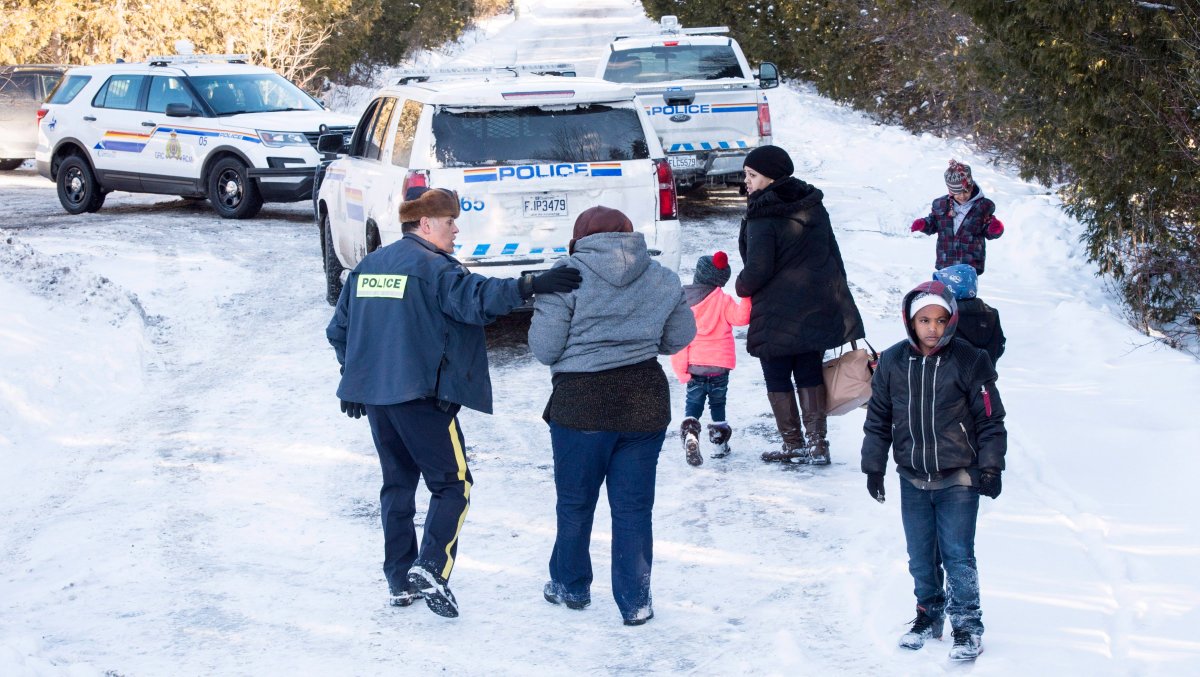The Canada Border Services Agency (CBSA) has been overwhelmed this year as scores of refugee claimants have crossed the border — many of them by way of Quebec.

By year’s end, over 36,000 will have sought asylum in the Great White North, according to a University of Calgary (U of C) analysis that was released this week.
Coverage of refugees on Globalnews.ca:
That would make 2017 the year in which the fourth-highest number of claimants have entered the country since 2000, the first year that the U of C analysis looked at.
The highest was in 2001, when there were 44,695 asylum claimants.
Nevertheless, internal government analysis shows that the current claim levels could lead to an 11-year wait for a hearing before the Immigration and Refugee Board (IRB), as well as $2.97 billion in social supports for people hoping to land in Canada.
How the refugee process works
With increasing attention to the issue of asylum-seekers, it’s a fitting time to revisit how Canada’s process for accepting refugees works.
Step 1: land here
Asylum-seekers can first expect to be arrested and turned over to the CBSA when they arrive in Canada.
Upon landing, they can apply for refugee status at their port of entry, like a land border or airport.
An officer will decide whether their claims should be forwarded to the IRB for a hearing.
You’ll be given a date for such a hearing, and you’ll have 15 days to fill out the forms in an application package.
In the forms, you’ll be asked to provide information about your family, your background and why you’re making a claim for refugee protection.
Step 2: security screening
- Budget 2024 failed to spark ‘political reboot’ for Liberals, polling suggests
- Train goes up in flames while rolling through London, Ont. Here’s what we know
- Peel police chief met Sri Lankan officer a court says ‘participated’ in torture
- Wrong remains sent to ‘exhausted’ Canadian family after death on Cuba vacation
Then, asylum-seekers will be fingerprinted, interviewed and undergo a background check.
Step 3: hearing
Asylum-seekers will then face a hearing to determine whether they’re eligible to make refugee claims.
You will not be eligible to make a refugee claim if officials discover that you have a criminal record, if you’ve already been turned down for a claim or if you have refugee status in another country.
You’ll be returned to your home country if any of the above is true.
Step 4: What if you’re eligible to make a claim?
Then your file will be sent to the IRB for a hearing.
At this point, you’ll be allowed to stay in Canada as your claim is processed.
You’ll need all your ID with you at your hearing. That includes a passport, driver’s licence and any other records to prove who you are, or to support your refugee claim.










Comments